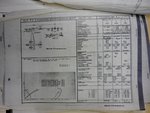kool kitty89
Senior Master Sergeant
On the Mosie's construction: It was not of typical wooden aircraft construction, DH had been working with wooden aircraft or some time and had developed specialized materials. They used birch plywood sanwiched over balsa. Additionally their construction methods required skilled labor for much of the construction with furnature companies contracted for many parts of the airframe. Significant changes to the manufacturing would be necessary to make it suitable for the large scale US pruduction methods.
Additionally (as mentioned by FLYBOYJ) the construction of the Mossie would have meant repairs and maintence would be more difficult. Service life would also likely be shorter, with aircraft becoming "war weary" more quickly than metal counterparts. Finally, tropical climates would not be very friendly to it, so the CBI and PTO would be problematic.
Additionally (as mentioned by FLYBOYJ) the construction of the Mossie would have meant repairs and maintence would be more difficult. Service life would also likely be shorter, with aircraft becoming "war weary" more quickly than metal counterparts. Finally, tropical climates would not be very friendly to it, so the CBI and PTO would be problematic.



